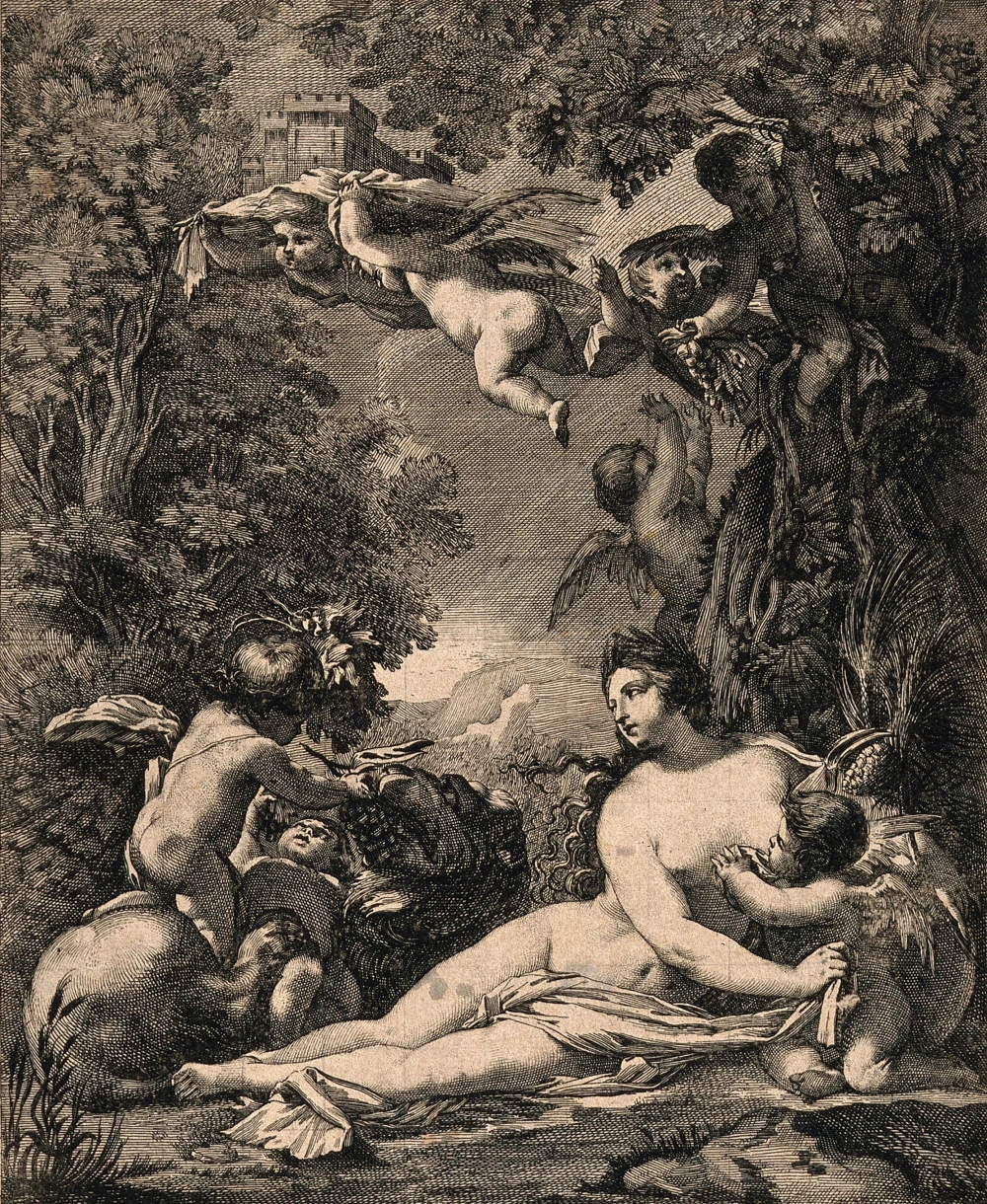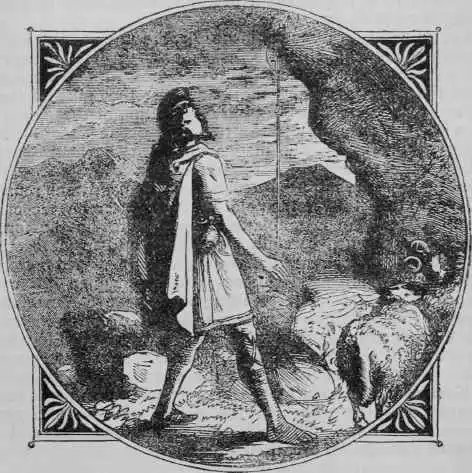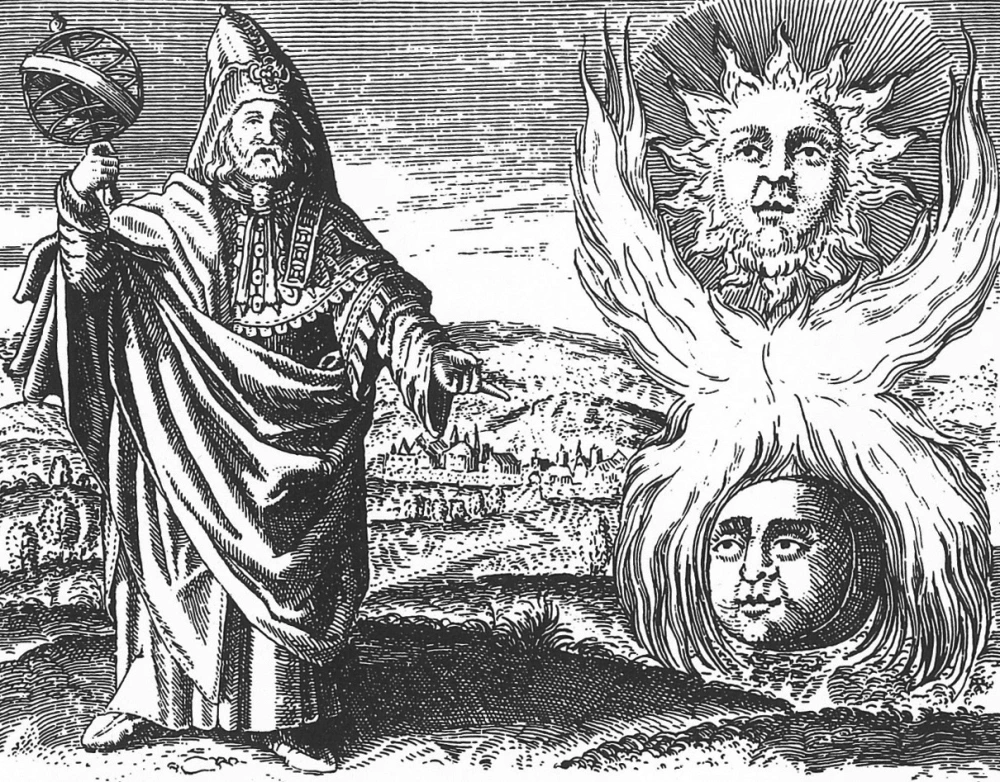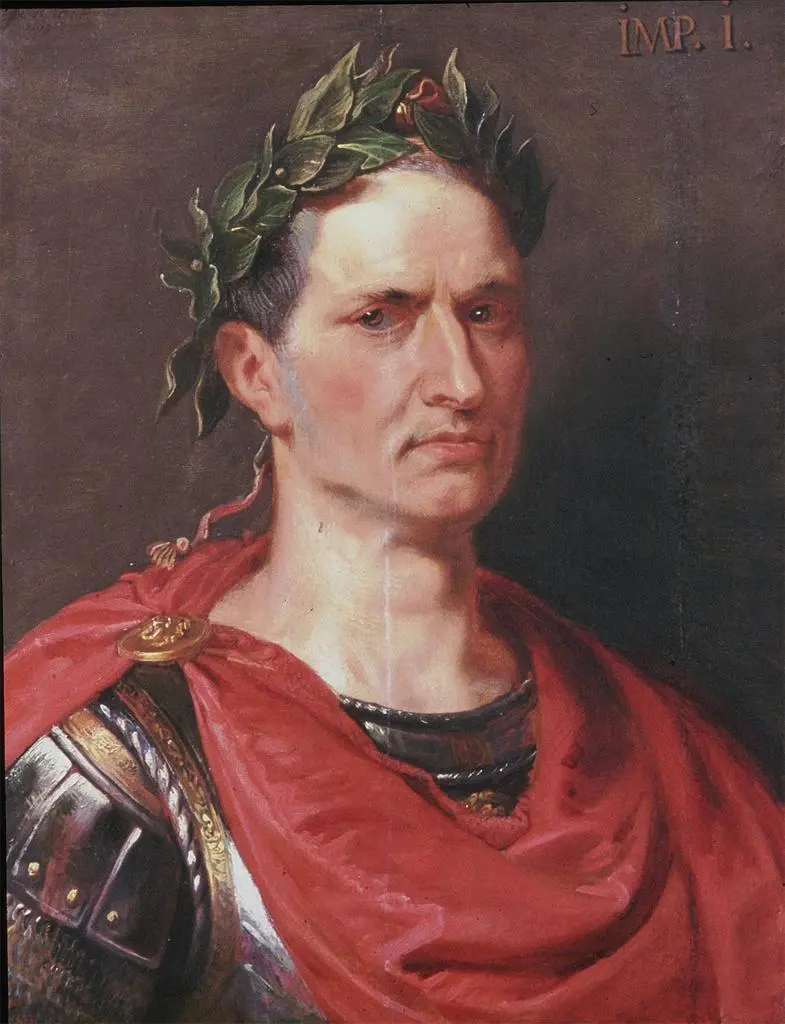The JEM (Jewish Esoteric Moralization) will reveal that Jews do not regard themselves in any fashion as racially pure. Nor, likewise, does it reveal an intention to remain pure but rather, very much the contrary. This is true even if some Religious portion of them has remained unmixed for a relatively long period. How long though, truly, is anyone’s guess.
The Biblical tradition, as we will discuss, is full of “retroactive continuity”, where Jewish ethnicity is ultimately given to invented characters[1] originally and parabolically intended as Aryans. We have to assume the construction of personal genealogies among Jews contains this tendency as well. Here one has an interest in appearing as Jewish as possible among in-group peers. Indeed, an Aryan grandmother here or there, becomes an embarrassing, irrelevant, almost insulting thing to parse and certainly emphasize. There one is less interested in the genes of “oppressors.”
Implicitly, the Jewish gene is understood as dominant. Hence the important, distinct part of their lineage is understood as Jewish. The JEM will confirm this attitude which is no important way distinct from a Negroes view of admixture with Aryans or at least during periods of decadence. Indeed, a man or woman who has married into the Jewish people, to the extent he bears children that identify as Jewish and seeks to benefit from an identification with this trade guild, has de facto converted to Judaism, whether officially or otherwise. There will be no instinct to preserve their Aryan ancestry.
Indeed, Jews are, in their origin, particularly when compared to Nordic Aryans, an admixed people. This they understand especially at their conscious, ostensibly most Jewish core. Hence, for them to find admixture undesirable would be in a sense to find themselves, and their existence, undesirable. Thus this is at the core of their earnest hatred of Nordic eugenics. It is not merely a case, as is often guessed, of “practice what I preach, not what I do.”
This is not to argue Jews are against “eugenics” per se —at their conscious core they understand as well as we that this is the path to dominance and survival— but rather that a Jewish eugenics is for them a process of admixing at least to the right degree. The full case for this will be appear in the entirety of the work I present. However, in the interim, I will provide some clues.
In the JEM we will encounter instances of Jewish artists identifying Jewish figures with names that mean “Great” or “The Greatest.” Names like “Max”, “Magnus” and so forth, neither particularly Jewish names. The explicitly Jewish Marvel character Magneto is perhaps the most salient contemporary example of this. This is certainly a reference, in part, to Aaron “the Greatest Priest” or the Hight Priest of ancient Israel.

Here the title is rendered in Hebrew Ha’kohen Ha’gadol, הַגָּדוֹל הַכֹּהֵן or Kohen Gadol, גדול כהן. The first title is frequently translated in the Hebrew as simply “Great.” It is comprised of Ha’kohen, הַכֹּהֵן, which may be translated in the modern Hebrew as “The Mechanic.” Here, perhaps, we get a sense of the proto-Jewish God Vulcan, a builder of golem or Talos. Ha’gadol translates as “Great”, “large”, “big”, “grand”, “high” and “mighty.”
To be clear, this is a not simple racial or religious boasting, if also, certainly that. Rather this moniker of the Great or Greatest has, in my estimation, persisted with Jews for a very long time indeed. In fact, in my estimation, it has been with them long before they called themselves Jews or were, in any case, know to the world as Jews. Likewise, it is particular in its meaning.
Again, the title appears to be an ancient title with a particular, esoteric significance to Jews or proto-Jews. We find it for instance in the Roman term Magna Mater which I will argue, along with other mountain and earth mothers, describes especially a Jewish or proto-Jewish type. This title was used to address Isis, the Semitic Saturn’s wife Rhea, and especially Cybele whom the Greeks knew as Meter Theon Idaia or “Mother of the Gods, from Mount Ida.”

As we will learn, Mount Ida of Crete was believed by the ancients to be a possible origin of the Jews. Indeed, even the name Jew, according to Tacitus’ account, was suspected as being derived from Ida or Idean. The Hebrew seems to offer clues here as well.
For example, we find this phrase ‘ishshah bĕriyth, אֵשֶׁת בְּרִית, which translates as “wife” but also, curiously, “a woman of Crete.” It’s comprised of the words ‘ishshah, אֵשֶׁת, “wife” and bĕriyth, בְּרִית, “alliance.” The related phrase ben bĕriyth, בֶּן בְּרִית, means “ally”, “allied man” and “Jew.” The word for Crete, Kretim, כרתים, is perhaps also related to the last. Regardless, the JEM will indicate Cretan as a reasonable synonym or “awareness raising” epithet for Jew.
Then there is the figure of Magnes the Shepherd, a mythological figure, who is in my estimation a symbolic synonym of the Semitic God Mercury. His name is the Latin word for magnetite and is often guessed to be the root word for magnet and magnetism. His legend, as related by Pliny the elder, describes how he discover magnetite ore on Mount Ida, when his feet started clinging to the earth. Whether the mountain mentioned here is the Mount Ida in Crete or Turkey[2], is not specified by Pliny. Though, for our purposes, it hardly matters, as both may be associated with Jewish or Proto-Jewish cults. Indeed, the one in Turkey was home to the Cybele or Magna Mater cult.

Though etymologists do not suggest it, it seems hard to believe Magnes is not related to Magna, with both carrying the original meaning “Great.” The Jewish figure of Magneto, appearing in the X-men parables, and the less well known Jewish comic book character of Will Magnus, both clear reference to this figure, seems to corroborate this understanding among Jewish esotericists. Rather it seems that Magnes may represent the development of a particularly potent metaphor to which the title of “The Great” was applied, indicating this “attractive” or “magnetic” figure Jewish. Indeed, in alchemy Magnesia is understood as the main ingredient of the “philosopher’s stone.”
In my view, we find a metaphor where a metal, representing the race of Jews or its conscious core, attracts and “shepherds” the other “metals.” Here we find as well, a philosophy of enchanting and attracting attention to oneself, as a means of leading as well as for the purposes of Bride Gathering. Hence we see this, for instance, in Christianity, where Jews posit themselves in an apparent internal dispute yet at the center of everyone’s life for better or worse. As it is said “no publicity is bad publicity.”
Though, likewise, this “magnetism” appears potentially from a certain imploding, self-centeredness and self-obsession, whether feigned or otherwise. This is imitable. Indeed, with knowledge and its easy acquisition, we come together again and develop a “heliocentric” world. This does not mean removing ourselves from the world. Quite the contrary, it means unifying to garner its attention and rule it.
It is perhaps doubly significant here that the metal that appears in the Magnes parable is Iron. Iron in alchemy is associated with Mars, who is both the God of War, as readers know, and the archetype of a common Aryan type, as this study and the JEM reveals. Hence the Magnes parable may be indicating a Jewish “enchanting” of this common Aryan type. Our review of Stan Lee’s Iron Man parable, where a magnet or magnetized plate is used to keep the clear Aryan golem of Tony Stark alive, may suggest something along these lines.
The title “the Great” could very well date from Sumer, finding an early manifestation in the reed Goddess Ningal whose name meant “Great Lady” or “Queen.” She was the wife of Nanna/Sin, the moon God, a key archetypal Semitic and proto-Jewish figure I will argue. The Semitic mountain Goddess Ninhursag, the consort of the Aryan figure of Enki, likewise was called the “Great Queen.”
“Great” is also the name of the important, yet often overlooked Semitic earth goddess, Maia. To wit, Maia means “Great” in Latin. She was in turn mother of the important Semitic figure Mercury or Hermes, who in Egypt would be known as Hermes Trismegistus or Hermes the thrice Greatest. There he was identified with “Thoth the Great, the Great, the Great” who is best regarded as “Symbolic Synonym.” We will connect both figures with the Prophets of the Bible.

Of course, famously the title “The Great” appears among important historical figures including Alexander the Great, Darius the Great and Cyrus the Great. Here it is guessed to have had its origin in Persia with the concept of the “Great King.” There, in fact, we might surmise some etymological connection to Magus or Magi. Here the word comes from us from the Greek Magos and the Old Persian Magush meaning “magician.” It is generally traced to the Indo-European root magh- meaning “to be able, have power.” One speculation suggests the Sanskrit word mahan meaning “great” as the origin.
Indeed, we might suspect that with historical figures like the aforementioned, the proliferation and even creation of this title enjoyed a certain Jewish assistance, where figures were indicated as friendly to Jews, influenced by Jews and maybe even intermixed with Jews or, in other words, even Jews themselves.
Certainly we would find this with the figure of Sargon of Akkad or Sargon the Great. At least in his mythologized form he is a clear proto-Jew. Indeed, as this book discusses, his mythical tale appears very clearly to be a source or early example of key symbolism surrounding strikingly similar Biblical figures. Yet here, again, I posit we find not a case of “bowdlerization”, as is frequently suggested, but of common symbols being “repurposed” in a similar manner by the same Semitic group, if later bearing a different name.
A belief of Jewish ancestry certainly exists for the philo-Semitic Cyrus the Great where some Rabbinic traditions indicate him the son of Esther and “Ahasuerus.”[3] Though in my estimation, as we will review, it’s unclear that the parabolic figure of Esther is intended a Jew in the esotericism, at least by birth.
Possibly the ostensibly philo-Semitic Alexander the Great is also believed a Jew by Jewish esotericists. Both the Talmud and the Jewish historian Josephus describes how Alexander dismounted his horse and bowed to the high priest Simon the Just, believing him to resemble an angel he had seen in a dream. [4]
Indeed, it is said because of Alexander’s special treatment of the Jews, whereby they were granted an autonomy not given to others, the name Alexander or Sender developed as a Jewish name in his honor. This is unusual to be sure. It is also true, the liberal-minded Alexander the Great was closely associated with the Gods Bacchus and Hercules both whom are, as this study discusses, Jewish or proto-Jewish Gods.
This, of course, does not imply that non-Jews would not also venerate or adopt these mythical figures as totems. Certainly they would. The name Philip, presumably a reference to Alexander’s father, will appear in contemporary JEM, attached to characters otherwise indicated as Jewish.[5] However the pattern, as I’ve observed it, is not strong enough to indicate definitively that Jewish esotericists believe Philip to have been a Jew or proto-Jew. Here the name theoretically could be selected for name meaning as well.[6]
Obviously, we do not guess Jewish admixture or even meaningful Jewish influence upon every person who bore this title, the Great, which could be arbitrarily adopted and promoted by any people or royal house, whether in the ancient world or otherwise. Peter the Great, for instance, does not necessarily appear to have been “Great for the Jews.”
Yet we should consider it meaningful that its equivalent, Magnus, did not appear widely during the Roman period, except occasionally as a first name.[7] Indeed, when Plutarch described its adoption by Pompey he suggested that this boastful title typically would have been considered invidious. There is something “Eastern” perhaps in its ostentatiousness.

On the other hand, the title Magnus would grow more popular among European peoples, often adopted by their Royal houses, upon conversion to a Latin-Speaking Catholic Church. Charlemagne or Charles the Great is perhaps the more famous example. In an important way Charlemagne marked the true arrival of Christianity in Europe. He is recognized as the first Emperor of Europe since the fall of the Roman Empire and is typically credited with playing a decisive and often brutal hand in delivering the continent to Christendom.
He is also understood in giving a sophisticated Jewry a free hand in their various commercial enterprises vis-à-vis a relatively undeveloped European population. In any case, the adoption of Christianity among European peoples —Jewish esotericist will indicate through numerous examples I present in this book— was, indeed, “Great” for Jews.
There appears as well, in the JEM, as we will discuss, a salient “Frankish Motif” that suggests an esoteric Jewish belief that the Frankish nobility was crypto-Jewish at its core. Hence, in the eyes of Jewish esotericists, Charles the Great might very well be considered a Jew or at least with meaningful Jewish heritage.
Regardless, the most striking proof this title “the Great” is especially meaningful to Jews is its appearance in Hebrew. For instance, one of the meanings of Rabbi or rab, רַב is “great.” Yet this is not the only meaning of rab, רַב. As a prefix it may mean “Multi-“or “Poly-.” As an adjective it may mean “great”, “much”, “many”, “numerous” and “considerable.”
Hence “great” is given a sense of number or multiplicity. But what is the significance of this? Here, in the figure and title of the Rabbi, one gains a sense of Jews as an admixed type and, indeed, well conscious of this admixture, as the JEM will corroborate. Readers may find it striking that the related Hebrew word, rabah, רַבָּתִי, means “Great” but also means “Multicultural.” It’s interesting as well that the same word means Rabbi in Yiddish.
Lastly it is worth considering another word for “Great” appearing in Hebrew. That isgadol, גדול. Gadol means “Great”, “upbringing”, “breed” but also curiously “tumor” and “excrescence.” Perhaps this is coincidence. On the other hand, there is sufficient evidence in the JEM that Judaism, at its conscious core, considers itself a malignancy to, for example, the Aryan race.
In any case, the idea that a Rabbi, whose very name suggests intermixture, works in any effective way to prevent admixture among his flock, amid a host population, becomes itself absurd. Consider: a man announces himself an Aryan separatist and the whole of Jewry is mobilized against him, an Aryan woman marries a Jewish man and some petty “yentas” grumble and behave foully… if this. Jewry is a Semitic Bride Gathering Cult.
The following articles in the series.
Part IV: The Bride Gathering Cult Part IV: The Chosen Bride & The Matrilineal Ruse
Part VI: The Bride Gathering Cult Part VI: Jewesses as “Leah” and Auxiliary Women
Part VII: The BGC Part VII: Judaism as PUA Cult & Barriers to Aryan men in Judaism
Part VIII: The Bride Gathering Cult Part VIII: The Aryan Brain Drain
A more general discussion that touches on the Bride Gathering Cult:
[1] We allow that they may have been inspired in part by real life characters in some, if not many, instances.
[2] These are the two Mount Idas in Greek Mythology
[3] This name appears in the Hebrew Bible as the name of the Persian ruler who marries Esther. Most scholars identify him with Xerxes I.
[4] Soṭah 33a; Jerusalem Talmud. Soṭah 4:3; Cant. R. 38c; Tosef., Soṭah, xiii
[5] This study only covers one example. This is the Stan Lee developed Superhero and X-man, Beast. His full alias, as revealed by Marvel, is Henry Philip “Hank” McCoy.
[6] Philip, from the Greek, is thought to mean “friend of horses.”
[7] Gnaeus Pompeius Magnus or Pompey the Great, so named by Sulla, was an unusual exception to this broader trend.
Excellent! I look forward to reading this. Expect slight delay before feedback. Will re-watch film first. Hopefully by Sunday evening. Thank you.
LikeLike
I’m not sure about Darius being a Jew. He is described as having an Aryan appearance, blue-eyed etc.
LikeLike
I don’t posit any of these figures as having necessarily been Jews. Here I seek to present a Jewish perspective and to get at their understanding of this title of “Great” or “Greatest.” From their perspective, blue eyes would not necessarily preclude one from being a Jew, of course.
LikeLike